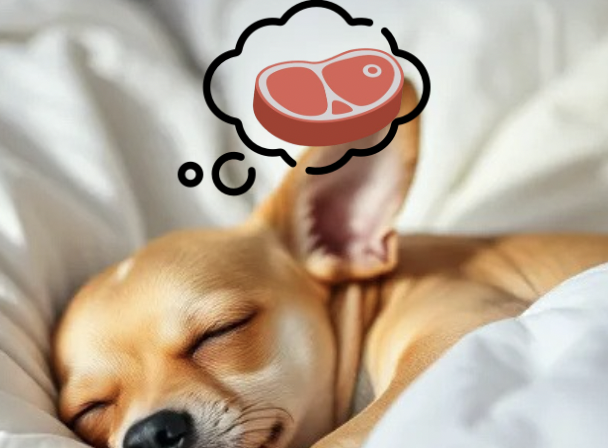When your dog sleeps, have you ever noticed that it wags its tail, wiggles its paws, or makes a little barking sound? Because of these incidents, many dog owners ask: Can dogs dream? Research indicates that this is the case. Like humans, dogs also dream, providing an intriguing window into their inner lives.
Can We Tell If a Dog Dreams?
Studies on sleep have shown that canines and humans follow very similar patterns. Dogs experience light sleep, deep sleep, and rapid eye movement (REM) sleep, which is when dreaming happens. The REM phase is characterized by intense dreaming since it is when the brain is at its most active.
Studies have shown that rats rehearse tasks like traversing mazes during sleep. Experts have also suggested that dogs digest their everyday experiences through dreams since canines have a much more complicated brain than humans.
A Dog’s Dreams: What Are They?
Dogs probably dream about things they’re already acquainted with, even if we can’t ask them directly. Some examples of these activities include playing fetch, interacting with other dogs, and bonding with their owners. Dogs may benefit from dreaming in a number of ways, including emotional processing, memory consolidation, and training reinforcing.
Characteristics of a Dream Dog
You may see the following when your canine is dreaming:
They may be “running” in their dreams if they twitch or move their legs.
Dreaming that you make noises, such as whimpers, growls, or gentle barks, might signify a very emotional or thrilling dream.
When a person is clearly in rapid eye movement (REM) sleep, you can tell because their eyes are moving beneath their closed lids.
Are Nightmares Happening to Dogs?
Dogs, like humans, may have nightmares. A traumatic event, such as a trip to the vet or a reprimand, may resurface in your dog’s dreams. Whimpering, snarling, or fidgeting are symptoms of a nightmare.
Do not wake your sleeping dog up too abruptly because it appears worried. They can be startled and confused by this. You should either whisper or let them wake up on their own.
A Guide to Better Sleep for Your Canine
For the benefit of your beloved pet’s sleep:
Make sure you have a nice bed—A warm, safe place to sleep may do wonders for your slumber.
Maintain regular hours for eating, playing, and sleeping; this will help children unwind more easily.
Lessen anxiety: Lessen the impact of stressful events and provide comfort after challenging times.
A Common Hope The belief that dogs dream strengthens the link between humans and their canine companions. The thought that your dog may be dreaming about you or reliving joyful memories makes their slumber tremors all the more endearing.
The next time your dog nods asleep, remember that it may be wagging its tails in a specially made dreamland or chasing bunnies.
